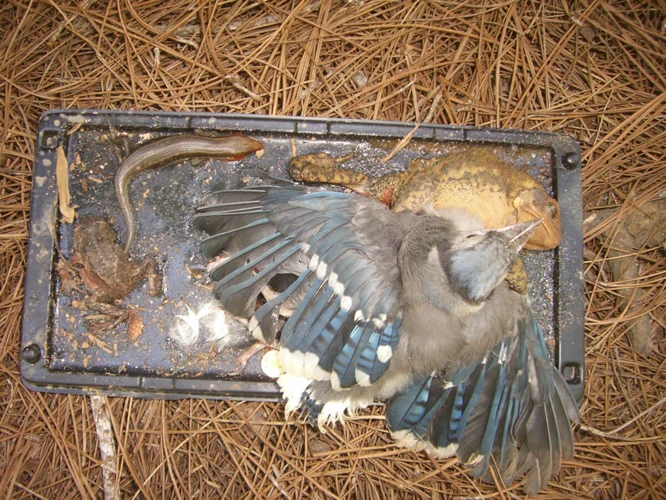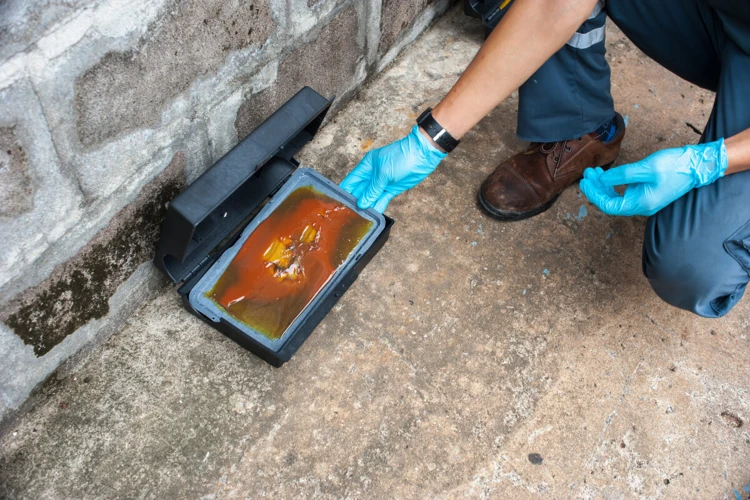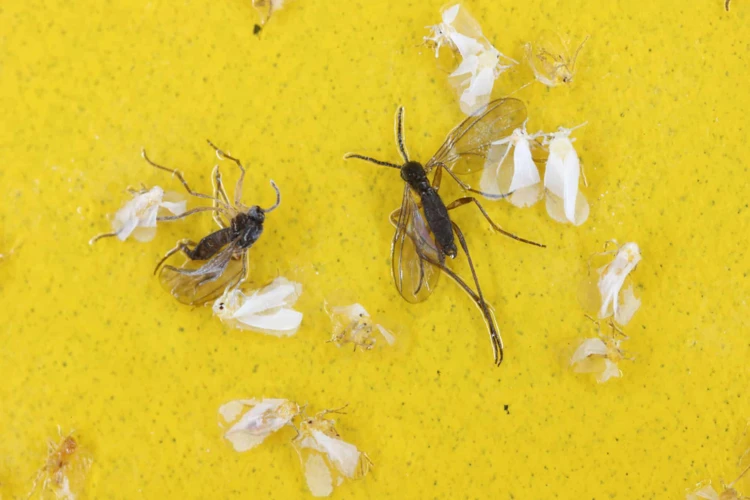Are you tired of pesky pests invading your home or business? Do you want to find a solution that is easy to use and highly effective? Look no further than glue traps! These simple yet powerful devices are a popular choice for trapping insects, rodents, and other unwanted critters. But with so many options on the market, it can be overwhelming to know where to start. In this article, we’ll explore the pros and cons of glue traps, provide tips for where to place them, and offer advice on how to make them more effective. By the end, you’ll have all the information you need to keep unwanted visitors at bay.
Pros and Cons of Glue Traps
Exploring the Upsides and Downsides of Using Glue Traps
Glue traps are a popular choice for catching pesky rodents and insects in households and commercial spaces. While they provide an effective non-toxic solution for pest control, there are also some downsides to using them. In this section, we will delve into the pros and cons of glue traps, weighing the advantages against the disadvantages. It’s important to understand both sides before deciding whether or not they are the right choice for you.
Pros
Using glue traps to catch pests has both advantages and disadvantages. In this section, we will take a closer look at the pros of using glue traps.
| Pros |
|---|
| Effective: Glue traps are an effective way to catch rodents, insects, and other pests. They can be especially useful in areas where traditional traps are not allowed or are ineffective. |
| Easy to Use: Glue traps are very easy to use. You simply place them in the desired location and wait for pests to get stuck. |
| Safe: Glue traps are a safe alternative to traditional traps, which can be hazardous to pets and small children. Additionally, glue traps do not use poison, so they will not harm pets or wildlife that may accidentally ingest them. |
| Reusable: Glue traps can be reused multiple times, which makes them a more economical option than some other pest control methods. |
| Versatile: Glue traps can be used to catch a wide variety of pests, including rodents, insects, and spiders. They are also effective in a variety of environments, including homes, businesses, and agricultural settings. |
Glue traps can be a very effective and safe way to control pests in your home or business. However, it is important to use them properly and dispose of them carefully to prevent accidental harm to pets or wildlife. If you want to learn more about glue and how to use it, check out our article on how to make wallpaper glue.
Cons
Glue traps are not a perfect solution when it comes to pest control, and they do have their fair share of cons. Here are some of the drawbacks of using glue traps:
- Cruelty to animals: Glue traps are inhumane and can cause a lot of suffering to the trapped animal. The animal may struggle to escape and can be stuck on the glue trap for days without food or water, leading to dehydration and starvation.
- Not always effective: Glue traps can be ineffective if not placed in the right locations or if the correct bait is not used. Rodents can easily avoid the traps if they are not placed strategically, making it a waste of time and effort.
- Not environmentally friendly: Many glue traps are made using harmful chemicals and plastics that can be toxic to the environment. Most glue traps are single-use items and cannot be recycled or reused.
- Foul odor: Once a pest is caught in a glue trap, it can die on the trap and start to decompose, leading to a foul odor in the surrounding area.
- Becomes inefficient over time: Glue traps can become less sticky as dust, dirt, and debris can accumulate on them over time, making them less effective at trapping pests.
Despite the drawbacks, glue traps can be a useful tool in controlling pesky rodent infestations. However, it is essential to be mindful of their limitations and take practical steps to ensure that they are not causing unnecessary harm to animals. If you are looking for alternatives to glue traps, there are eco-friendly pest control methods available, such as using essential oils or natural repellents. Check out how to attach glass to wood without glue for a creative and natural alternative.
Where to Place Glue Traps
Placing glue traps in the right locations is crucial for ensuring they are effective in catching pests. Failure to place them correctly can lead to frustrating results. In this section, we’ll provide general tips and specific spots that will help you maximize your glue trap’s potential and achieve your goal of ridding your home of pests. Whether you are dealing with mice, spiders or other pests, we’ve got you covered. Let’s dive in!
General Tips
General Tips for placing glue traps:
- Identify the pest: Check which pest you want to catch before placing glue traps. Different pests require different placements. For example, rodents can be caught by placing glue traps against walls, while crawling insects require traps to be placed along their usual routes.
- Place in areas of activity: Place glue traps in areas that show signs of pest activity such as droppings or chew marks.
- Place away from reach: Place the glue trap in areas that are not accessible to children or pets to prevent them from getting hurt or stuck.
- Keep dry: Ensure that the glue trap is kept dry. Moisture can reduce the stickiness of the glue and make it ineffective.
- Place in multiples: For larger infestations, place multiple glue traps in a room to increase the likelihood of catching pests.
- Dispose properly: Check local regulations as some areas have specific regulations for disposing of trapped pests.
Make sure to follow these general tips for the most efficient use of glue traps. By identifying the pest, placing the glue trap in areas of activity, keeping it dry, placing it away from reach, placing it in multiples, and disposing of it properly, you can ensure that your glue traps effectively capture pests.
Specific Spots
When it comes to placing glue traps, there are several specific spots that you should focus on. These spots can be highly effective in capturing pests and preventing them from entering certain areas of your home or office.
To make it easier for you to decide where to place your glue traps, we’ve put together a helpful table below with some common pest problems and their corresponding “hot spots” for glue trap placement.
| Pest Problem | Hot Spot for Glue Trap Placement |
|---|---|
| Mice | In corners and behind furniture Apply Bostik Glue to a piece of cardboard and place along walls or baseboards |
| Rats | In attics, basements, and crawl spaces Place traps along walls to intercept movement |
| Roaches | In kitchens and bathrooms, behind appliances and under furniture |
| Spiders | Near doors or in corners of rooms |
| Ants | Near entry points like windows, doors or cracks in the walls Use plaster of Paris and Helmar Glue |
It’s important to note that while glue traps can be effective in capturing pests, they shouldn’t be the only method used to combat an infestation. It’s also a good idea to seal up any cracks or gaps in your home that pests could be using to enter. Regular cleaning and decluttering can also help prevent pest problems in the first place.
Remember to check your glue traps regularly, and dispose of them promptly once they have captured pests. For more tips on how to make glue traps more effective, continue reading below.
When to Check and Dispose of Glue Traps
When to Check and Dispose of Glue Traps: Checking and disposing of glue traps is essential for an effective pest control strategy. The time intervals for checking and disposing of glue traps depend on the level of pest infestations. For low infestation levels, a weekly check is sufficient. In contrast, for high infestation levels, checking the traps every day may be necessary. If the glue traps are full or contaminated, it’s time to dispose of them and replace them with fresh ones.
Disposing of Glue Traps: It’s important to dispose of glue traps carefully to avoid spreading pests or harmful materials. The easiest method is to use gloves or a plastic bag to remove the trap complete with the pests and dispose of it in the trash. Make sure that the trash is sealed to prevent the pests from escaping. If you prefer a more eco-friendly approach, you can release the trapped pests into the wild or use a humane trap instead.
Environmental Considerations: Glue traps can have an environmental impact due to their indiscriminate nature of capturing any animal that comes into contact with the glue. To minimize adverse effects, try to use glue traps only for pest control purposes. Consider using other pest control methods, such as traps that allow for the release of non-targeted animals back into the wild. Additionally, explore environmentally friendly alternatives such as essential oils, diatomaceous earth, or boric acid.
Related Links: If you’re interested in learning more about glue, check out this article on what kind of glue to use for pool cue tips. You can also learn how to make a DIY goo with glue and water by following some simple steps mentioned in this article. Additionally, if you want to know how to thin Aleene’s tacky glue for better usage, this guide might be useful to you.
How to Make Glue Traps More Effective
Making glue traps more effective can be crucial in catching pesky rodents and insects. Here are some tips to enhance the efficiency of glue traps:
1. Use More than One Trap: Place several glue traps in areas where you suspect activity. By placing multiple traps, you increase the chances of catching pests.
2. Bait the Trap: Adding bait to the glue trap can entice rodents and insects to step onto it. Peanut butter and bacon bits are effective bait options.
3. Create a Path: Pests often have specific paths they follow. By creating a path for them to follow to the glue trap, you can increase the likelihood of catching them. Place cardboard or paper alongside the wall leading to the glue trap.
4. Heat the Glue: Pests may avoid glue traps because their body heat melts the sticky glue. By heating the glue slightly, it can become more effective in trapping the pests. Place the trap in the sun or on a warm surface for a few minutes.
5. Use a Heavier Glue: Using a heavier glue can make it difficult for pests to escape. Consider using glue traps made specifically for larger rodents.
By following these tips, you can make your glue traps more effective in catching pests. However, it’s essential to remember to handle glue traps with care and dispose of them properly to prevent harm to people and pets.
If you want to learn more about glue, check out this article on how much does glue weigh.
Conclusion
The key takeaway for effective placement of glue traps is to think strategically and consider the behavior of the pests you are trying to catch. While glue traps have both pros and cons, they can be a useful tool in capturing small rodents and insects around your home or business. Remember to place the traps in areas with high pest activity and to check and dispose of the traps regularly to avoid any pests getting stuck for extended periods of time.
In addition, you can make glue traps more effective by using attractants such as food or pheromones to lure pests into the trap. It is also important to ensure that the glue is not too thick and that the trap is placed in a location that is protected from dust and debris.
Overall, by using these tips and tricks, you can effectively and safely use glue traps to control pest populations in your home or business. And if you want to learn more about how to use glue for crafts or envelope liners, be sure to check out our other articles on how to thin glue for crafts and how to glue envelope liners.
Frequently Asked Questions
What kind of pests can be caught with glue traps?
Glue traps can catch a variety of pests, including mice, rats, insects, and other small animals.
Do glue traps kill pests instantly?
No, glue traps do not kill pests instantly. It can take several hours for the pest to die from dehydration and exhaustion after getting stuck on the glue.
Can glue traps be harmful to humans or pets?
Glue traps are not harmful to humans or pets if used properly and kept out of reach. However, it’s important to handle them carefully and dispose of them properly to avoid any potential harm.
Can glue traps be reused?
No, glue traps are designed for one-time use only. Once a pest is caught or the trap is full of debris, it should be disposed of and replaced with a new one.
What’s the best way to dispose of glue traps?
The best way to dispose of glue traps is to wrap them in newspaper or plastic and throw them in the trash. Do not flush them down the toilet or throw them in the recycling bin.
Can glue traps be used outdoors?
Yes, glue traps can be used outdoors, but they may not be as effective since weather conditions and other outdoor factors can decrease their stickiness or catch more debris than intended pests.
Are there any alternative to glue traps?
Yes, there are alternative pest-control methods, such as snap traps, electronic traps, and humane traps, that do not use glue. These methods may be more effective, eco-friendly, or humane, depending on your needs and beliefs.
Can glue traps be used to control large infestations?
Glue traps are not recommended for large infestations since they may not be able to catch all the pests and can become quickly overwhelmed.
Can glue traps be placed near food or in kitchens?
No, glue traps should not be placed near food or in kitchens since they can easily contaminate food or surfaces with glue or trapped pests.
How often should glue traps be checked?
Glue traps should be checked daily or every few days, depending on the level of pest activity and the size of the trap. Pests can become stressed or die of thirst if left trapped for too long.


